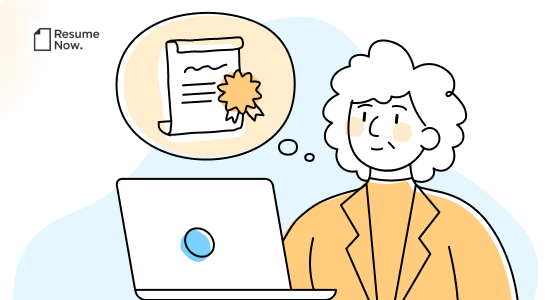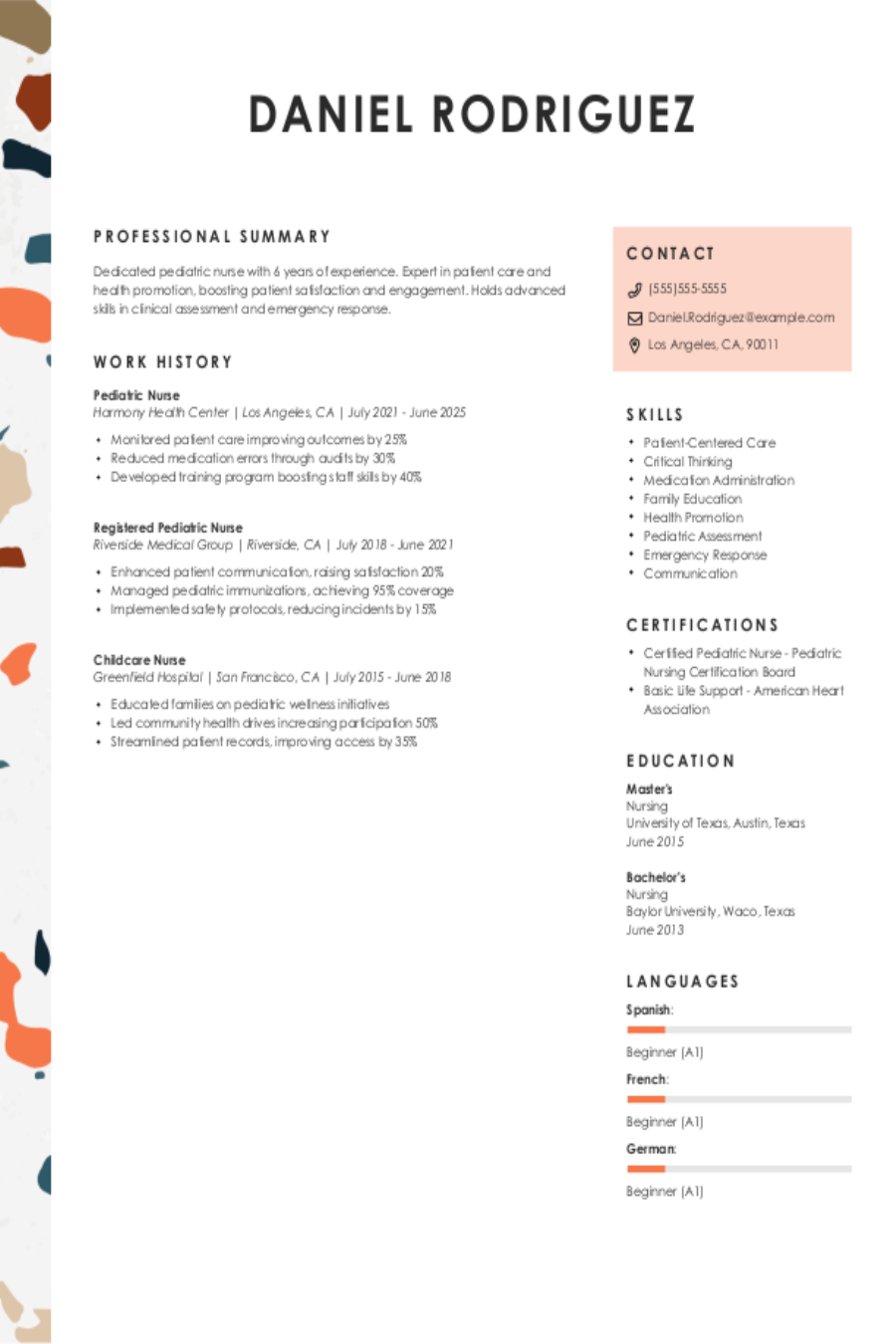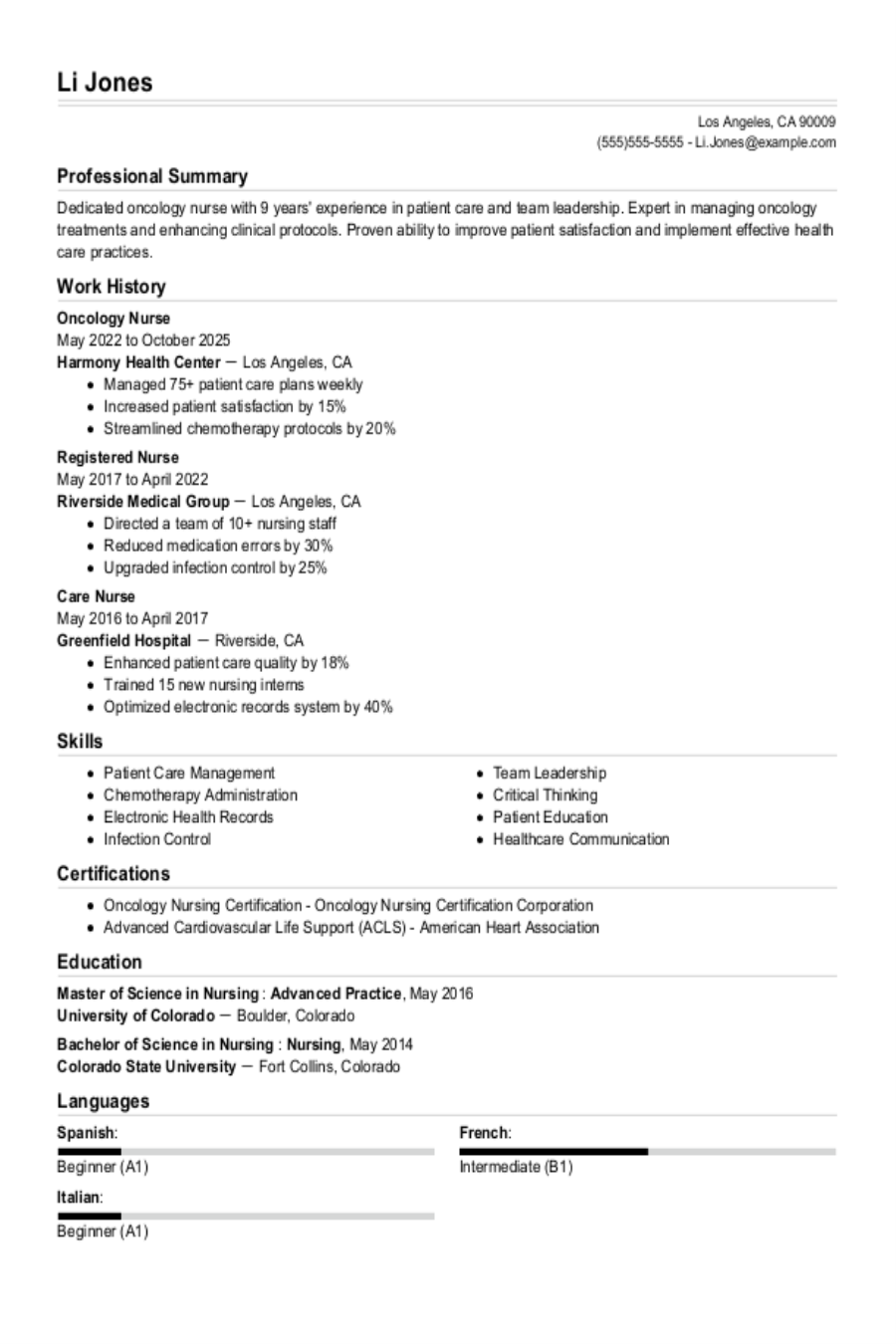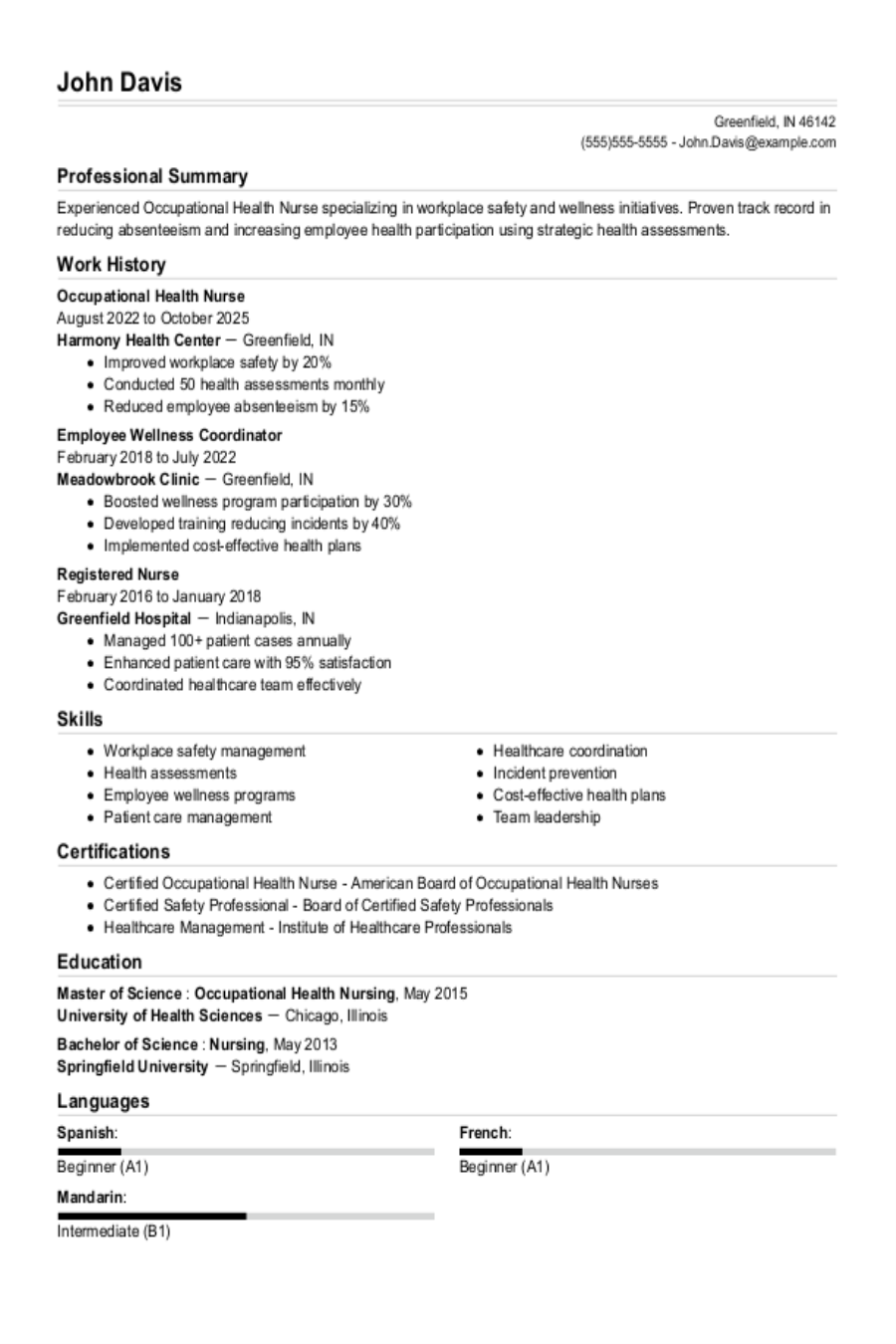What does a cover letter look like? From length to style to formatting, creating a cover letter that captures hiring managers' attention means telling your story in a compelling way. Our guide will help you understand how to make an interview-winning cover letter with the help of step-by-step tips and examples.
Our guide will cover:
- The basics of building a cover letter
- How to choose a cover letter style
- Sample cover letters from different career levels
Ready to create your cover letter right now? Our Cover Letter Generator has everything you need to build a job-winning cover letter in minutes. Forget writer's block — our AI content suggestions and ready-to-use templates help you make and style your letter without the headache.
What Goes Into a Cover Letter
To understand what a cover letter looks like, you need to learn the cover letter basics. Once you have a firm grasp on the parts of a cover letter, it will be easier to put together your own. Here are the sections you need to write your cover letter:
- Cover letter header: Your cover letter header should feature your name and contact details, including a phone number, professional email address, and city and state. If you have an active LinkedIn presence or links to a portfolio, include those in your header as well.
- Address: After your contact details, list the employer's details, including the name of who you're trying to reach, the organization, their phone number, and email address. Then, open your letter with "Dear [name of hiring manager]." If you don't have or can't find the name of who will be receiving your letter, you can address it more broadly with "Dear Hiring Manager."
- Opening paragraph: Start your letter with a brief introduction that covers who you are and what you bring to the table. Don't dig into specific details; this section should be a brief overview that takes up no more than three sentences.
- Body paragraphs: Focus on explaining how well your skills align with the needs of the role. Your body paragraphs are the main content of your letter, so mention why you're interested in the role, why you're a good fit, and specific accomplishments from your career. Examine the job description for keywords you can integrate into your body paragraphs to show that you're prepared to take on the responsibilities of the role.
- Closing paragraph: Conclude your cover letter with a closing paragraph that summarizes why you're interested in the role and why your experience makes you a strong candidate. Use a polite call to action to invite the employer to reach out for an interview.
- Sign off: End your letter with a signoff and signature. Appropriate signoffs include "Warm Regards," "Respectfully," and "Sincerely." Steer clear of casual or familiar choices like "Cheers."
Your cover letter should avoid repeating information from your resume, but that doesn't mean that you can't reiterate some of your biggest accomplishments. Use your body paragraphs to describe the details of your experience in deeper detail than your resume allows. To use your space effectively, focus on describing the accomplishments that relate most to the role you're targeting.
How Is a Cover Letter Organized?
Organization is critical to ensuring that your cover letter is easy to read and gets your point across well. There are lots of ways to organize your letter's content, but the basic structure of header, introduction, body paragraphs, conclusion, and signoff is a good place to start.
A great cover letter also uses space wisely. Your introduction should highlight some of your key strengths up front and your body paragraphs should dig into specific details. Here are some organizational tips to help your letter flow smoothly:
Tip #1
Use bullet points in your cover letter
Bullet points aren't just for your resume. Use bullet points in your cover letter to draw attention to your key points and maintain clarity. Bullet points should not be used for lengthy paragraphs. Instead, use them to give your letter structure and outline multiple brief but related accomplishments or skills.
Example of bullet points on a cover letter:
In my previous role at Imagine Animation, I:
- Designed over 30 character models for a feature-length animation project.
- Reduced render time by 25% through optimized rigging techniques.
- Mentored two junior animators, resulting in faster onboarding.
Many cover letters don't use bullet points. They are not a requirement and won't always be the best choice for your letter. But even if you opt to stick to traditional paragraphs, you should still be brief and to the point. Whether you use bullet points or not, clarity is a must.
Tip #2
Focus on achievements instead of responsibilities
It's important to choose relevant experience to discuss in your cover letter and be strategic about your focus to make a stronger impact. Don't simply list the tasks you handled in your past role. Use action verbs and concrete accomplishments to help your body paragraphs flow neatly and illustrate your skills.
A good structure to keep in mind is this:
[action verb] + [specific responsibility] = [measurable result]
Example sentence using this structure:
Led a team of five designers to develop marketing assets for a new product launch, resulting in a 25% increase in user engagement within the first month.
Or, you may also focus on a specific challenge you overcame at work. This is a great way to showcase problem-solving skills and demonstrate your ability to think on your feet. For this, keep the following structure in mind:
[work challenge] + [response that demonstrates key skills] = [resolution]
Example sentence using this structure:
When an unexpected software crash caused data loss mid-production, I took the lead on activating backup protocols and reconstructing assets, minimizing project delay to less than 72 hours.
You don't have to stick to a rigid structure for every sentence of your cover letter, but organizing your most important thoughts into this format will help you show your contributions clearly.
Tip #3
Write a conclusion that doesn't repeat your body paragraphs
The conclusion of your cover letter is crucial because it's your final chance to leave an impression on the employer. It may be tempting to restate all of your most relevant skills, but there are better ways to use this space than rehashing information that you've already covered in your letter's body. Instead, try a structure like this:
[sentence briefly reiterating key experience or skills] + [sentence stating specific interest in contributing to the role] + [sentence reminding the reader to reach out for an interview] + [final sentence thanking the reader for their time]
Sample cover letter conclusion using this structure:
With my background in 3D animation and experience leading cross-functional creative teams, I am confident in my ability to contribute meaningfully to your studio's next major project. I'm particularly excited about bringing my storytelling and technical skills to a role that values both innovation and collaboration. I would welcome the opportunity to speak further about how I can support your team's goals. Thank you for taking the time to review my application.
How to Style Your Cover Letter
Knowing what goes into a cover letter is helpful for understanding how to make a persuasive letter, but what does a good cover letter look like? When it comes to styling your cover letter, there are a few routes you can take: the DIY route or the template route.
If you're feeling confident in your Google Docs or Word skills, you can start with a blank document and build the style as you write each section. This is especially effective if you're planning on creating a simple cover letter.
But if you want to build a cover letter with a strong sense of personal branding, a ready-to-use template might be the way to go. Resume Now offers cover letter templates in a range of styles that match our resume templates, so you can submit a cohesive application package.
Whether you choose a premade template or create your letter from scratch, keep these basic professional style rules in mind:
- A cover letter's length should be between half a page and a whole page. Your letter should never be longer than one page.
- Choose a professional font like Calibri, Times New Roman, or Arial for your letter.
- Your font size should be between 10 and 12 points and should be consistent throughout your document, except the header, which may be larger.
- Align your document to the left and set your margins to 1 inch on each side.
What should a cover letter look like in an email? If you're typing your letter directly into an email or a cover letter field in an application, formatting matters less; You won't need to worry as much about picking a unique template or setting your margins. Still, even in an email, a cover letter should be neat, consistent, and include each of the expected cover letter sections.
Sample Cover Letter
Here's a sample cover letter so you can see all the above advice put together into a job-winning final product.
Wondering what file type you should choose for your cover letter? Many employers will specify which file types they accept. If they don't specify a preference, then PDF is usually the best choice. PDF documents are widely accepted and cannot be edited by the recipient.
Key Takeaways
Start with a neat header
Every cover letter begins with a header. Provide your contact information at the top of your document alongside any professional links you wish to include.
Address your letter to the employer
Add the name, location, number, and email address of the employer. If you can, use the hiring manager's name to address the letter personally. If not, address it to "Dear Hiring Manager."
Write a succinct introduction
Give the employer a taste of your qualifications in your introductory paragraph. Open with a short description of your career and achievements using no more than three sentences.
Create strong and specific body paragraphs
In the body paragraphs, highlight specific accomplishments that align with the role's responsibilities and describe challenges you've overcome at work to show your skills in action.
Consider using bullet points
Give your accomplishments a neat and concise structure by organizing them into bulleted lists. Whether you use bullet points on your final letter or not, aim for brevity and clarity.
Conclude with a call to action
End your cover letter by reiterating your qualifications and reminding the reader that you're interested in discussing the role further in an interview.
Sign off appropriately
Finish with a professional signoff like "Warm Regards" or "Sincerely," followed by your name.
Make sure your formatting is neat
Select a professional font style and align your document to the left. Consistency will help make your letter appear polished.
Try a ready-to-use template
Choose a cover letter template that complements your field and career stage. A premade template gives you a chance to build your letter quickly and match the style of your resume.
Resources to Help With Your Job Search
- Cover Letter Examples
- What Is the Purpose of a Cover Letter?
- How to Start a Cover Letter
- How to Write a Cover Letter for an Internal Position
- How to Use AI to Prepare for an Interview
- The Parts of a Resume
Was this information helpful? Let us know!
Hailey is a career advice writer dedicated to helping job seekers excel in their careers.
More resources

Still in the Game: 9 in 10 Older Workers Are Upskilling to Stay Competitive
The idea that older workers are resistant to change doesn t ho...

The AI Boss Effect: 97% of Workers Have Asked ChatGPT for Advice Instead of Their Manager
Resume Now s latest report explores how AI is replacing manage...

37 Unique Skills to Put on Your Resume
Trying to avoid the skills you see pop up on resumes repeatedl...

Pediatric Nurse Resume: Examples, Templates and Tips
Was this information helpful? Let us know &star &star &star &s...

Oncology Nurse Resume: Examples, Templates and Tips
Our oncology nurse resume examples will help you build a resum...

Occupational Health Nurse Resume: Examples & Skills
Looking for a cure to your resume blues? Our occupational heal...
